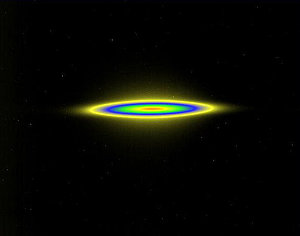Record brilliance for the ESRF The ESRF has reached a new record brilliance, confirming the ESRF’s position as a leader among high brilliance hard X-ray sources. At the origin of this achievement is a new system, installed as part of the ESRF Upgrade Programme, for focussing the stored electron beam. Its beam position monitors provide a more precise measurement of the beam position, which in turn permit a more accurate feedback to the electronics that controls the beam position and size. The smaller the diameter and divergence of the beam—also called the emittance—the more brilliant X-rays it is able to produce. A vertical emittance (rms) of just 5 picometres is now routinely available, resulting in an electron beam of only 9 micrometres in height within an undulator (the device that forces circulating electron to generate bursts of X-rays). This smaller electron beam generates proportionally smaller X-ray beams, which also have better coherence. The resulting brilliance as recorded at beamline ID27 (High pressure beamline) reached a record value of 8x1020 Phot/s/.1%/mr2/mm2 at 7 keV. Extremely brilliant X-rays are beneficial to experiments that require a focussed beam. “We can see more detail in imaging applications such as tomography, a technique that maps an object in 3D” said T. Buslaps, beamline operation manager in the Material Science Group. Another application that will benefit is buried interfaces, for example in semiconductor materials. Here, intense high-energy X-rays need to penetrate first through a thick layer of absorbing material, and then great precision at the micro- or nano- metre scale is required to distinguish the interface from these surrounding materials. T. Schulli, scientist in charge of beamline ID01, said that for this kind of application, the ESRF will soon be installing a new Fresnel optics at this beamline to make the most of the smaller source size. He adds that “with a coherence length two times bigger in the vertical plane, we will gain a reduction of the beamsize by a factor of two. This will offer great benefits to experiments looking at individual nanostructures”. Looking ahead, even higher brilliance values are feasible at the ESRF, extending well into the 1021 region. Changes to the storage ring lattice within the Upgrade Programme will permit longer in-vacuum undulators (5 m), and the electron current in the ring could be raised to 300 mA as been demonstrated during tests earlier in 2010. [For further information, please see the article on the ESRF website: http://www.esrf.fr/news/spotlight/spotlight115/] |
|


